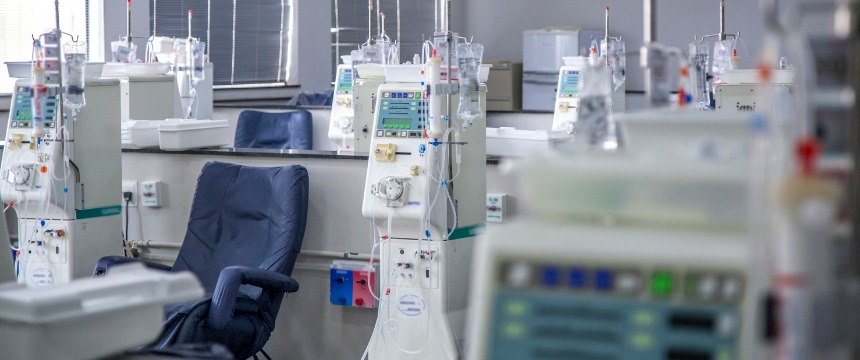FDA Drafts Public Health Emergency Transition Plan: What Device Manufacturers Need to Know

The U.S. Food & Drug Administration (FDA) previously issued emergency use authorizations (EUA) and adopted emergency policies in response to the COVID-19 public health emergency (PHE) to facilitate the availability of key medical devices such as in vitro diagnostic tests, personal protective equipment, and ventilators.
To enable an “orderly and transparent transition” when the PHE ends, FDA recently released two nonbinding draft guidance documents addressing: (1) EUAs (EUA Guidance); and (2) medical devices falling under specific PHE policies (PHE Guidance). The FDA will issue final guidance documents following public comment.
Termination of EUAs and Emergency Policies
Of note, COVID-19 EUAs will not automatically terminate when the PHE ends. FDA is statutorily authorized to issue EUAs under certain circumstances and must follow statutory guidelines to terminate EUAs. The EUA Guidance clarifies that the FDA will publish an advance termination notice in the Federal Register 180 days before it terminates an EUA (EUA termination date).
Unlike EUAs, however, adopted emergency policies will automatically terminate the day the declared PHE ends. To create flexibility, the PHE Guidance offers a new phased approach to extend certain of the adopted emergency policies for 180 days after the declared PHE ends. See List 1 for the PHE Guidance’s scope. Phase 1 will begin the day the PHE ends (implementation date), Phase 2 will begin 90 days after the implementation date, and Phase 3 will begin 180 days after the implementation date. FDA will withdraw its emergency policies at the start of Phase 3 (withdrawal date). FDA will recommend different compliance requirements for each phase in preparation for the withdrawal date. If the PHE ends before the final guidance is issued, FDA states that the implementation date will be at least 45 days after the finalization of the guidance.
The FDA is considering the following transition plan for manufacturers of medical devices issued EUAs during the PHE:
-
- FDA strongly recommends that medical device manufacturers begin planning their post-EUA or post-PHE regulatory and disposition strategies now while the PHE remains ongoing.
-
- FDA will adopt a “risk-based approach” and recommends that manufacturers of certain life-supporting and life-sustaining devices, such as ventilators and portable oxygen generators, submit a notification of intent to the CDRH Document Control Center within 90 days of advance notice of termination or before.
- This notification of intent should contain certain information as outlined in the draft documents, inform the FDA as to whether they will continue distributing their device after the PHE, and include a proposed termination plan.
- FDA will adopt a “risk-based approach” and recommends that manufacturers of certain life-supporting and life-sustaining devices, such as ventilators and portable oxygen generators, submit a notification of intent to the CDRH Document Control Center within 90 days of advance notice of termination or before.
-
- If a device manufacturer wants to continue distributing devices post-termination, they must submit a marketing submission to FDA along with a transition implementation plan.
-
- FDA doesn’t intend to object to the continued distribution of devices post-termination if:
- The manufacturer has submitted a marketing submission to FDA and had it accepted by FDA before the termination date; and
- FDA has not taken a final action on the marketing submission.
- FDA doesn’t intend to object to the continued distribution of devices post-termination if:
-
- Manufacturers not intending to continue distribution of emergency devices after the PHE must discontinue distributing these devices post-termination. However, FDA doesn’t intend to request market removal for:
- Single use, non-life supporting devices (e.g. facemasks);
- Reusable, non-life supporting devices (e.g. remote patient monitoring devices) if restored to approved settings with updated labels;
- Reusable life-supporting devices (e.g. ventilators) if restored to approved settings with updated labels; and
- In vitro diagnostic devices if used or expired within 2 years.
- Manufacturers not intending to continue distribution of emergency devices after the PHE must discontinue distributing these devices post-termination. However, FDA doesn’t intend to request market removal for:
-
- For unique situations left unaddressed in either draft document, FDA encourages manufacturers to initiate discussions through the Q-Submission program to develop plans to address specific scenarios.
- In some cases, manufacturers may request an exemption or variance from a device Quality System requirement within 90 days of publication of advance notice of termination. The FDA will make case-by-case compliance and enforcement decisions.
FDA recognizes that it will take time for device manufacturers, healthcare facilities, providers, patients, and consumers to adjust to new policies post-PHE and seeks to avoid exacerbating product shortages and supply chain disruptions. The FDA invites comments now through March 23, 2022. Submit EUA Guidance comments here. Submit PHE Guidance comments here.
Foley is here to help you address the short- and long-term impacts in the wake of regulatory changes. We have the resources to help you navigate these and other important legal considerations related to business operations and industry-specific issues. Please reach out to the authors, your Foley relationship partner, or to our Health Care Practice Group with any questions.



